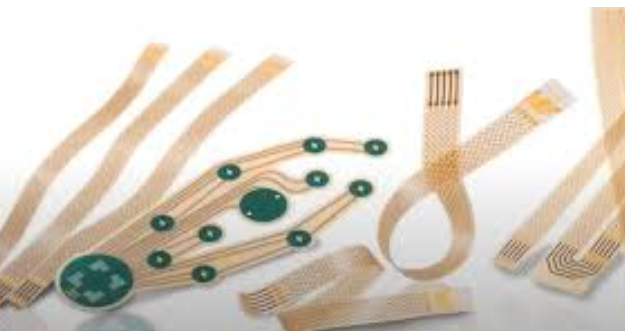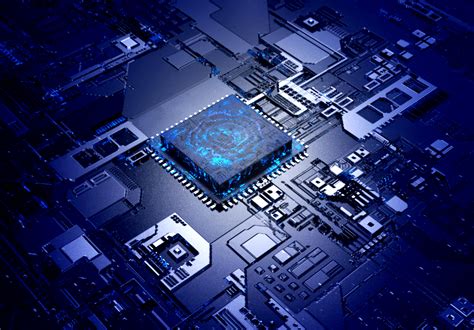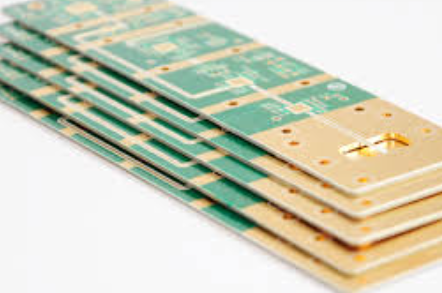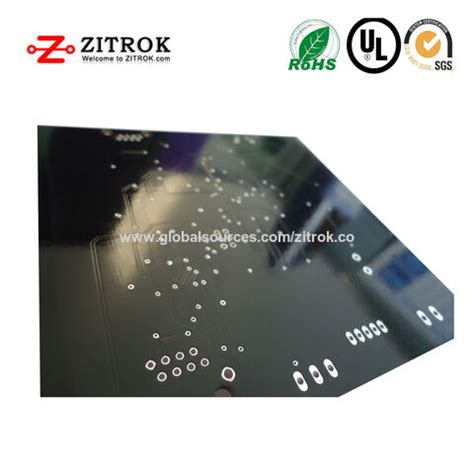Stretchable flex pcb
Advantages Of Using Stretchable Flex PCB In Wearable Technology
Stretchable flex PCBs, or printed circuit boards, represent a significant advancement in the realm of wearable technology. These innovative components offer a multitude of advantages that make them particularly well-suited for integration into wearable devices.
One of the primary benefits of stretchable flex PCBs is their inherent flexibility and elasticity.
Unlike traditional rigid PCBs, stretchable flex PCBs can bend, twist, and stretch without compromising their functionality. This flexibility is crucial for wearable technology, which often needs to conform to the contours of the human body. By seamlessly integrating with the natural movements of the wearer, these PCBs enhance comfort and usability, making the devices more appealing to consumers.
In addition to their flexibility, stretchable flex PCBs are also lightweight and thin.
This characteristic is particularly advantageous for wearable technology, where minimizing bulk and weight is essential. The slim profile of these PCBs allows for the creation of sleek, unobtrusive devices that can be worn comfortably for extended periods. Furthermore, the reduced weight contributes to the overall portability of the wearable devices, making them more convenient for users to carry and use throughout their daily activities.
Another significant advantage of stretchable flex PCBs is their durability.
These PCBs are designed to withstand repeated mechanical stress, such as stretching and bending, without suffering damage. This resilience is particularly important for wearable technology, which is often subjected to constant movement and physical activity. The durability of stretchable flex PCBs ensures that wearable devices remain functional and reliable over time, even under demanding conditions. Consequently, this reliability enhances the user experience and fosters greater trust in the technology.
Moreover, stretchable flex PCBs offer improved electrical performance compared to their rigid counterparts.
The materials used in these PCBs, such as conductive inks and flexible substrates, provide excellent electrical conductivity and signal integrity. This superior performance is critical for wearable devices, which often require precise and reliable data transmission. By ensuring consistent electrical performance, stretchable flex PCBs contribute to the overall efficiency and effectiveness of wearable technology.
The versatility of stretchable flex PCBs also extends to their design and manufacturing processes
These PCBs can be custom-designed to meet the specific requirements of various wearable applications. This adaptability allows for the creation of highly specialized devices tailored to the unique needs of different users. Additionally, the manufacturing process for stretchable flex PCBs is compatible with existing PCB production techniques, making it relatively straightforward to integrate these components into current manufacturing workflows. This compatibility facilitates the adoption of stretchable flex PCBs in the wearable technology industry, promoting innovation and development.
Furthermore, the use of stretchable flex PCBs in wearable technology can lead to cost savings in the long run.
The durability and reliability of these PCBs reduce the need for frequent repairs and replacements, thereby lowering maintenance costs. Additionally, the ability to create custom designs can streamline the production process, reducing waste and improving efficiency. These cost-saving benefits make stretchable flex PCBs an economically viable option for manufacturers and consumers alike.
In conclusion, the advantages of using stretchable flex PCBs in wearable technology are manifold. Their flexibility, lightweight nature, durability, improved electrical performance, design versatility, and cost-saving potential make them an ideal choice for the development of advanced wearable devices. As the demand for wearable technology continues to grow, the adoption of stretchable flex PCBs is likely to play a pivotal role in shaping the future of this dynamic industry.

Innovations In Stretchable Flex PCB For Medical Devices
Stretchable flex PCBs, or printed circuit boards, represent a significant advancement in the realm of medical devices, offering unprecedented flexibility and adaptability. These innovative components are designed to bend, twist, and stretch, making them ideal for integration into wearable and implantable medical technologies. The development of stretchable flex PCBs has been driven by the need for more comfortable, reliable, and efficient medical devices that can conform to the human body’s complex contours.
One of the primary advantages of stretchable flex PCBs is their ability to maintain electrical connectivity and functionality under mechanical stress.
Traditional rigid PCBs are limited in their application due to their inflexibility, which can lead to discomfort and potential failure when used in dynamic environments. In contrast, stretchable flex PCBs are constructed using materials such as polyimide or silicone, which provide the necessary elasticity and durability. This flexibility allows for the creation of medical devices that can be worn continuously without causing irritation or hindrance to the user.
Moreover, the integration of stretchable flex PCBs into medical devices has opened new avenues for patient monitoring and diagnostics.
Wearable devices equipped with these advanced circuits can continuously monitor vital signs such as heart rate, blood pressure, and glucose levels, providing real-time data to healthcare providers. This continuous monitoring is particularly beneficial for patients with chronic conditions, as it enables early detection of potential health issues and timely intervention. Additionally, the data collected can be transmitted wirelessly to medical professionals, facilitating remote patient care and reducing the need for frequent hospital visits.
The application of stretchable flex PCBs is not limited to external wearable devices; they are also being utilized in implantable medical technologies.
For instance, stretchable electronics can be used in cardiac pacemakers, neural implants, and other devices that require direct interaction with the body’s tissues. The ability of these PCBs to conform to the body’s movements and maintain functionality under various conditions enhances the performance and longevity of implantable devices. This adaptability is crucial for ensuring that the devices remain effective over extended periods, reducing the need for invasive replacement procedures.
Furthermore, the development of stretchable flex PCBs has been accompanied by advancements in manufacturing techniques.
Innovations such as laser direct structuring (LDS) and additive manufacturing have enabled the production of highly intricate and precise circuit patterns on flexible substrates. These techniques allow for the creation of custom-designed PCBs tailored to specific medical applications, ensuring optimal performance and reliability. Additionally, the use of biocompatible materials in the construction of stretchable flex PCBs ensures that they can be safely used within the human body without causing adverse reactions.
In conclusion, the advent of stretchable flex PCBs represents a transformative development in the field of medical devices. Their unique properties of flexibility, durability, and biocompatibility make them ideal for a wide range of applications, from wearable health monitors to implantable medical technologies. As manufacturing techniques continue to evolve, the potential for these advanced circuits to revolutionize patient care and improve health outcomes becomes increasingly apparent. The integration of stretchable flex PCBs into medical devices not only enhances their functionality and comfort but also paves the way for more personalized and effective healthcare solutions.

Design Challenges And Solutions For Stretchable Flex PCB
Designing stretchable flex PCBs presents a unique set of challenges and requires innovative solutions to ensure functionality and reliability. Unlike traditional rigid PCBs, stretchable flex PCBs must maintain electrical performance while enduring mechanical deformation, such as stretching, bending, and twisting. This necessitates a careful consideration of materials, layout, and manufacturing processes.
One of the primary challenges in designing stretchable flex PCBs is selecting appropriate materials that can withstand repeated mechanical stress without compromising electrical integrity.
Conventional PCB materials, such as FR4, are unsuitable due to their rigidity. Instead, designers often turn to flexible substrates like polyimide or polyethylene terephthalate (PET), which offer better flexibility. However, these materials alone are not sufficient for stretchable applications. Incorporating elastomeric materials, such as silicone or thermoplastic polyurethane (TPU), can provide the necessary stretchability. These elastomers can be used as substrates or encapsulants to protect the circuitry while allowing for mechanical deformation.
Another significant challenge is the layout of the circuitry. Traditional straight-line traces are prone to breaking under stress.
To address this, designers employ serpentine or meander patterns, which can elongate and contract without breaking. These patterns distribute the mechanical stress more evenly across the traces, reducing the likelihood of failure. Additionally, the use of conductive inks or pastes, which can be printed onto the flexible substrate, offers a more adaptable solution compared to traditional copper traces. These conductive materials can be formulated to maintain conductivity even when stretched.
Thermal management is also a critical consideration in the design of stretchable flex PCBs.
The materials used in these PCBs often have different thermal expansion coefficients, which can lead to delamination or cracking under thermal cycling. To mitigate this, designers must carefully match the thermal properties of the materials used. Additionally, incorporating thermal vias or heat spreaders can help dissipate heat more effectively, ensuring the longevity of the PCB.
Manufacturing stretchable flex PCBs poses its own set of challenges.
Traditional PCB manufacturing processes, such as photolithography and etching, may not be suitable for flexible and stretchable materials. Instead, additive manufacturing techniques, such as screen printing or inkjet printing, are often employed. These methods allow for the precise deposition of conductive inks onto flexible substrates, enabling the creation of intricate circuitry patterns. However, ensuring the adhesion and durability of these printed traces remains a challenge. Post-processing steps, such as curing or sintering, are often required to enhance the mechanical and electrical properties of the printed traces.
Reliability testing is another crucial aspect of designing stretchable flex PCBs.
These PCBs must undergo rigorous testing to ensure they can withstand the mechanical and environmental stresses they will encounter in real-world applications. This includes cyclic bending, stretching, and twisting tests, as well as thermal cycling and humidity exposure. Advanced simulation tools can also be used to predict the performance of the PCB under various conditions, allowing designers to identify potential failure points and optimize the design accordingly.
In conclusion, the design of stretchable flex PCBs involves addressing a range of challenges related to material selection, circuit layout, thermal management, manufacturing processes, and reliability testing. By leveraging innovative materials and design techniques, and employing advanced manufacturing methods, it is possible to create stretchable flex PCBs that meet the demanding requirements of modern applications. As technology continues to advance, the development of new materials and processes will further enhance the capabilities and reliability of these versatile PCBs.
Future Trends In Stretchable Flex PCB Applications
Stretchable flex PCBs, or printed circuit boards, represent a significant advancement in the realm of electronic design and manufacturing. As technology continues to evolve, the demand for more versatile and adaptable electronic components has surged. Stretchable flex PCBs, characterized by their ability to bend, twist, and stretch without compromising functionality, are poised to play a pivotal role in the future of various industries. This article explores the future trends in stretchable flex PCB applications, highlighting their potential to revolutionize multiple sectors.
One of the most promising areas for stretchable flex PCB applications is in the field of wearable technology.
As consumers increasingly seek devices that seamlessly integrate into their daily lives, the need for electronics that can conform to the human body becomes paramount. Stretchable flex PCBs offer the perfect solution, enabling the creation of smart clothing, fitness trackers, and medical monitoring devices that are both comfortable and unobtrusive. These advanced PCBs can be embedded into fabrics or directly onto the skin, providing continuous monitoring of vital signs, physical activity, and other health metrics. Consequently, the healthcare industry stands to benefit immensely from these innovations, as they facilitate real-time health monitoring and early detection of medical conditions.
In addition to wearable technology, the automotive industry is also set to experience significant advancements through the adoption of stretchable flex PCBs.
Modern vehicles are increasingly reliant on electronic systems for everything from engine control to infotainment. The flexibility and durability of stretchable flex PCBs make them ideal for use in automotive applications, where they can be integrated into various parts of the vehicle, including seats, dashboards, and even tires. This integration can lead to enhanced safety features, improved user interfaces, and more efficient energy management systems. As electric and autonomous vehicles become more prevalent, the demand for innovative electronic solutions will only continue to grow, further driving the adoption of stretchable flex PCBs.
Moreover, the consumer electronics sector is another area where stretchable flex PCBs are expected to make a substantial impact.
The trend towards thinner, lighter, and more flexible devices is evident in the development of foldable smartphones, tablets, and other portable gadgets. Stretchable flex PCBs enable these devices to maintain their functionality while being bent or folded, offering users a more versatile and durable product. This technological advancement not only enhances the user experience but also opens up new possibilities for device design and functionality.
Furthermore, the medical field is likely to see transformative changes with the integration of stretchable flex PCBs in various applications.
Beyond wearable health monitors, these PCBs can be used in implantable medical devices, such as pacemakers and neural stimulators. Their ability to conform to the body’s contours and withstand the dynamic environment within the human body makes them ideal for such applications. This can lead to more effective treatments and improved patient outcomes, as well as the development of new medical technologies that were previously unattainable.
In conclusion, the future trends in stretchable flex PCB applications are vast and varied, with significant potential to revolutionize multiple industries. From wearable technology and automotive advancements to consumer electronics and medical innovations, the versatility and adaptability of stretchable flex PCBs make them a critical component in the next generation of electronic devices. As research and development in this field continue to progress, we can expect to see even more groundbreaking applications emerge, further solidifying the importance of stretchable flex PCBs in the technological landscape.





